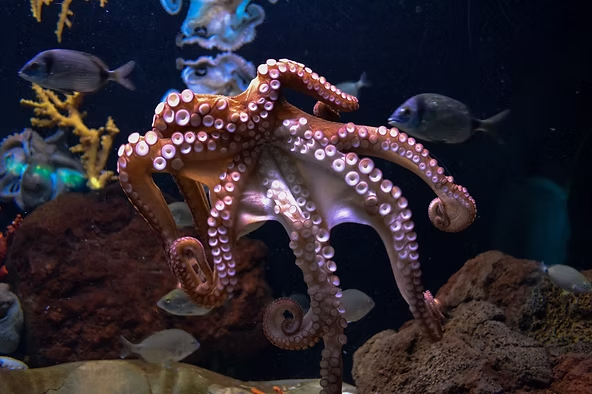Octopuses and Squids: The Chameleons of the Sea
When it comes to changing colors, most people think of chameleons. However, certain species of octopuses and squids, known as cephalopods, possess this remarkable ability and are often called the “Chameleons of the Sea.”
Presence of Chromatophores
Squids and octopuses have thousands of chromatophores just beneath the surface of their skin. These specialized cells are responsible for their color-changing abilities.
How Chromatophores Work
Each chromatophore contains an elastic sac at its center, colored black, orange, brown, or red. By stretching this sac through a coordinated system of nerves and muscles, a specific color dominates, effectively changing the animal’s overall appearance.
Iridophores and Leucophores
Many cephalopods also have iridophores and leucophores. Iridophores contain reflective plates that create bright, shimmering colors, while leucophores mimic surrounding hues for camouflage. These systems work differently from chromatophores but enhance their color-changing abilities, giving them an edge in the competitive marine environment.
Why Squids and Octopuses Change Colors
- Protection from Predators: Color changes help them blend in and avoid being eaten.
- Camouflage for Hunting: They can hide in their surroundings to ambush prey.
- Communication: Color patterns also serve as a mode of signaling to other cephalopods.
This extraordinary ability highlights the intelligence and adaptability of octopuses and squids, making them true masters of disguise in the ocean.

